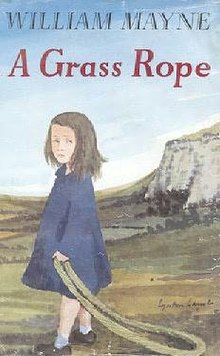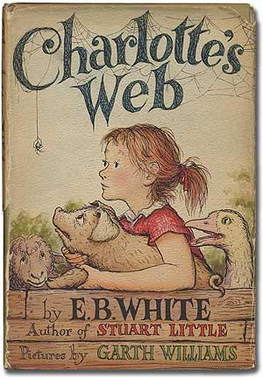
Charlotte's Web is a book of children's literature by American author E. B. White and illustrated by Garth Williams. It was published on October 15, 1952, by Harper & Brothers. The novel tells the story of a livestock pig named Wilbur and his friendship with a barn spider named Charlotte. When Wilbur is in danger of being slaughtered by the farmer, Charlotte writes messages in her web praising Wilbur, such as "Some Pig", "Terrific", "Radiant", and "Humble", to persuade the farmer to let him live.
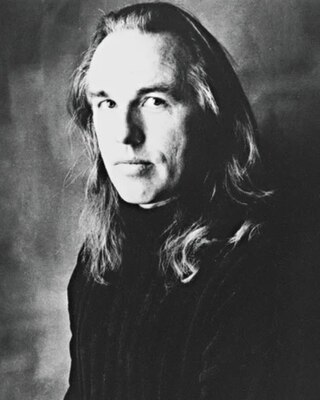
Michael Hague is an American illustrator, primarily of children's fantasy books.
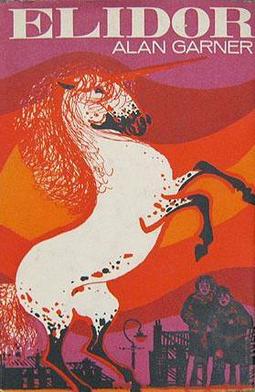
Elidor is a children's fantasy novel by the British author Alan Garner, published by Collins in 1965. Set primarily in modern Manchester, it features four English children who enter a fantasy world, fulfill a quest there, and return to find that the enemy has followed them into our world. Translations have been published in nine languages and it has been adapted for television and radio.
William James Carter Mayne was an English writer of children's fiction. The Oxford Companion to Children's Literature calls him one of the outstanding children's authors of the 20th century and The Times Literary Supplement reportedly called him "the most original good writer for young people in our time". In 2004, he was convicted of sexual abuse.
Freddy the Pig is the central figure in a series of 26 children's books written between 1927 and 1958 by American author Walter R. Brooks and illustrated by Kurt Wiese, consisting of 25 novels and one poetry collection. The books focus on the adventures of a group of animals living on a farm in rural upstate New York.

Victor Ambrus was a Hungarian-born British illustrator of history, folk tales, and animal story books. He also became known from his appearances on the Channel 4 television archaeology series Time Team, on which he visualised how sites under excavation may have once looked. Ambrus was an Associate of the Royal College of Art and a Fellow of both the Royal Society of Arts and the Royal Society of Painters, Etchers and Engravers. He was also a patron of the Association of Archaeological Illustrators and Surveyors up until its merger with the Institute for Archaeologists in 2011.

Jakers! The Adventures of Piggley Winks, or Jakers in Europe, is an animated children's television series. The series was broadcast on PBS Kids in the United States, and on CBBC and CBeebies in the United Kingdom. It was also broadcast in Australia on ABC Kids. The series ran for three seasons and 52 episodes total from September 7, 2003, to January 23, 2007, with reruns airing through August 31, 2008. Reruns aired on the Qubo television network from June 30, 2012 to March 26, 2017.

Mary Louisa Molesworth, néeStewart was an English writer of children's stories who wrote for children under the name of Mrs Molesworth. Her first novels, for adult readers, Lover and Husband (1869) to Cicely (1874), appeared under the pseudonym of Ennis Graham. Her name occasionally appears in print as M. L. S. Molesworth.
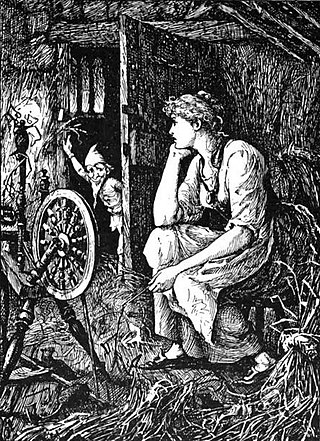
The Langs' Fairy Books are a series of 25 collections of true and fictional stories for children published between 1889 and 1913 by Andrew Lang and his wife, Leonora Blanche Alleyne. The best known books of the series are the 12 collections of fairy tales also known as Andrew Lang's "Coloured" Fairy Books or Andrew Lang's Fairy Books of Many Colors. In all, the volumes feature 798 stories, besides the 153 poems in The Blue Poetry Book.
Alice Rose Provensen and Martin Provensen were an American couple who illustrated more than 40 children's books together, 19 of which they also wrote and edited. According to Alice, "we were a true collaboration. Martin and I really were one artist."
Michael Foreman is a British author and illustrator, one of the best-known and most prolific creators of children's books. He won the 1982 and 1989 Kate Greenaway Medals for British children's book illustration and he was a runner-up five times.

The Oddball Couple is an American animated television series that aired on ABC on Saturday mornings for 16 episodes from September 6 to December 20, 1975. The show was produced by DePatie-Freleng Enterprises, and was distributed by Viacom Enterprises. It is an adaptation of the television sitcom The Odd Couple, which had ended its run that year, after five seasons on ABC.
Helen Sewell was an American illustrator and writer of children's books. She won a Caldecott Medal Honor as illustrator of The Thanksgiving Story by Alice Dalgliesh and she illustrated several novels that were runners-up for the Newbery Medal.

A brownie or broonie (Scots), also known as a brùnaidh or gruagach, is a household spirit or hobgoblin from Scottish folklore that is said to come out at night while the owners of the house are asleep and perform various chores and farming tasks. The human owners of the house must leave a bowl of milk or cream or some other offering for the brownie, usually by the hearth. Brownies are described as easily offended and will leave their homes forever if they feel they have been insulted or in any way taken advantage of. Brownies are characteristically mischievous and are often said to punish or pull pranks on lazy servants. If angered, they are sometimes said to turn malicious, like boggarts.
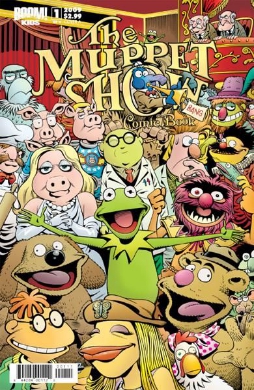
The Muppet Show is a comic book series based on the variety television series of the same title created by Jim Henson and featuring The Muppets. The series was written and drawn by Roger Langridge and published by Boom! Kids, an imprint of Boom! Studios. In 2011, the Boom! license with Disney Publishing Worldwide expired. Disney's own comic book publishing subsidiary, Marvel Comics, renamed the series Muppets and published four issues in 2012.

The Little Grey Men: A story for the young in heart is a children's fantasy novel written by Denys Watkins-Pitchford under the pen name "BB" and illustrated by the author under his real name. It was first published by Eyre & Spottiswoode in 1942 and it has been reissued several times. Set in the English countryside, it features the adventures of four gnomes who may be the last of their race. At the same time it features the countryside during three seasons of the year.

Collected Stories for Children is a collection of 17 fantasy stories or original fairy tales by Walter de la Mare, first published by Faber in 1947 with illustrations by Irene Hawkins. De la Mare won the annual Carnegie Medal recognising the year's best children's book by a British subject. It was the first collection to win the award and the first time that previously published material had been considered.
